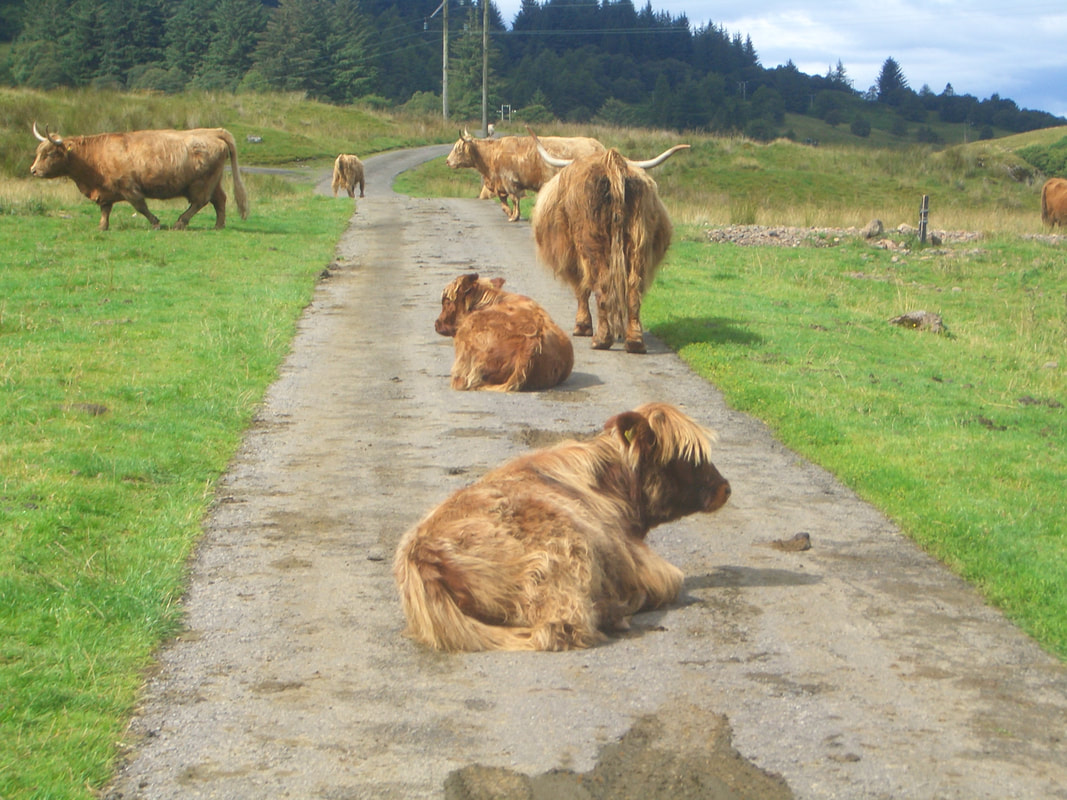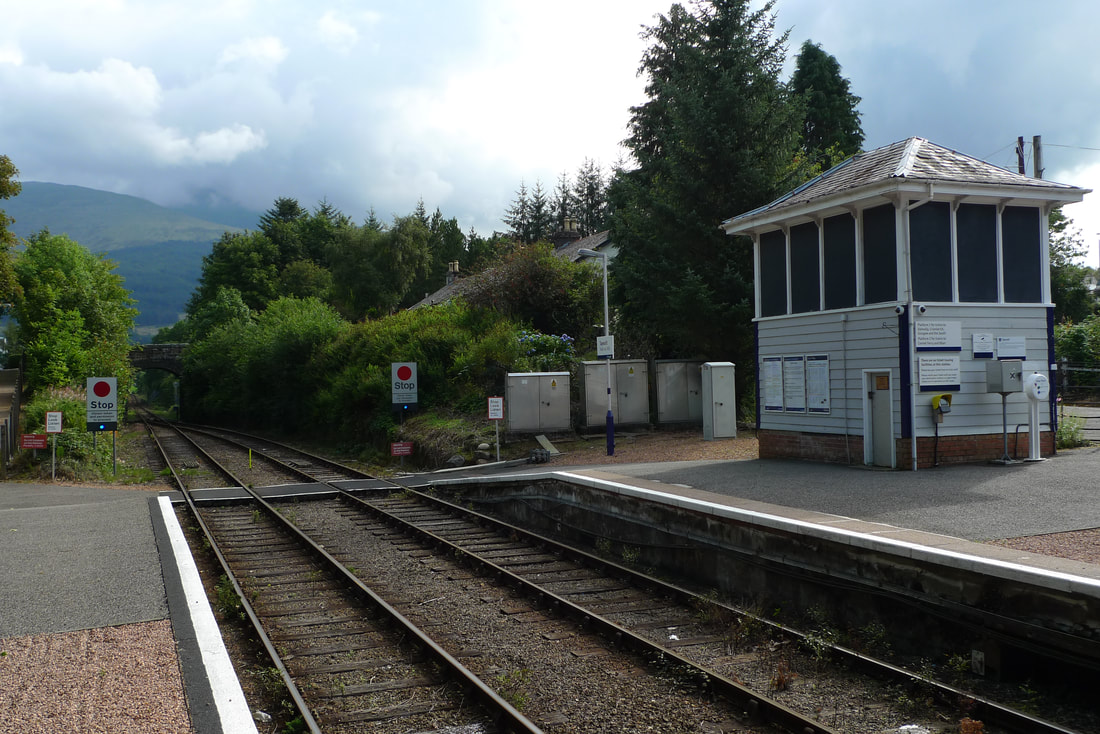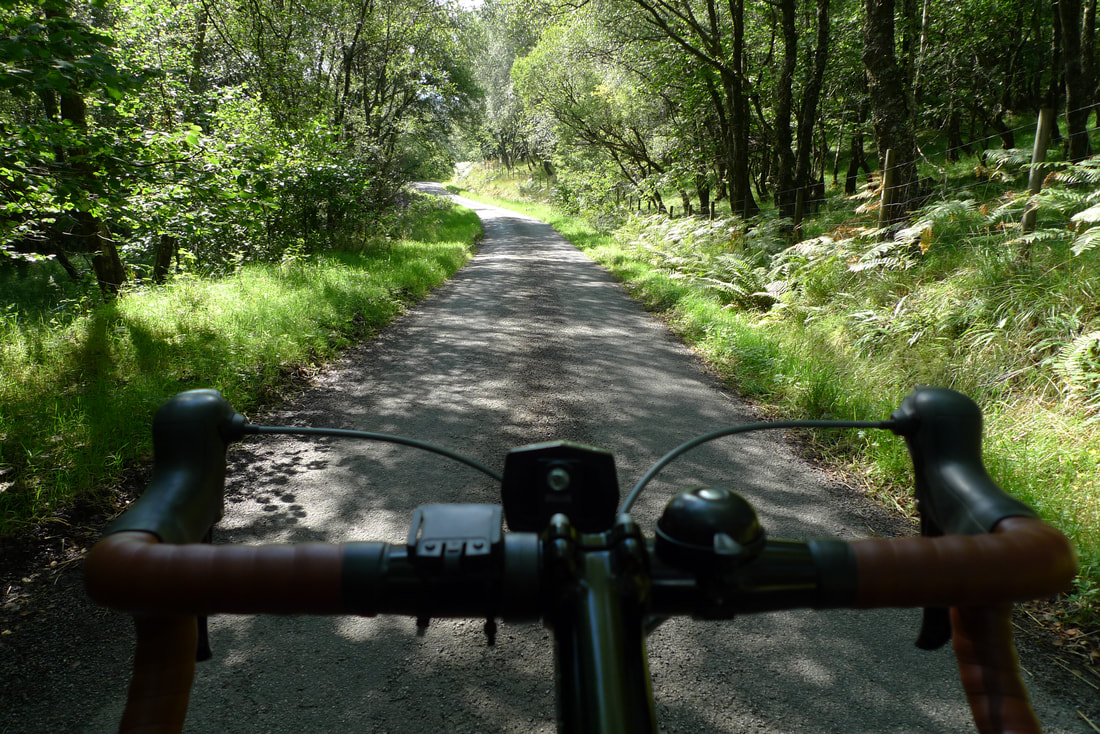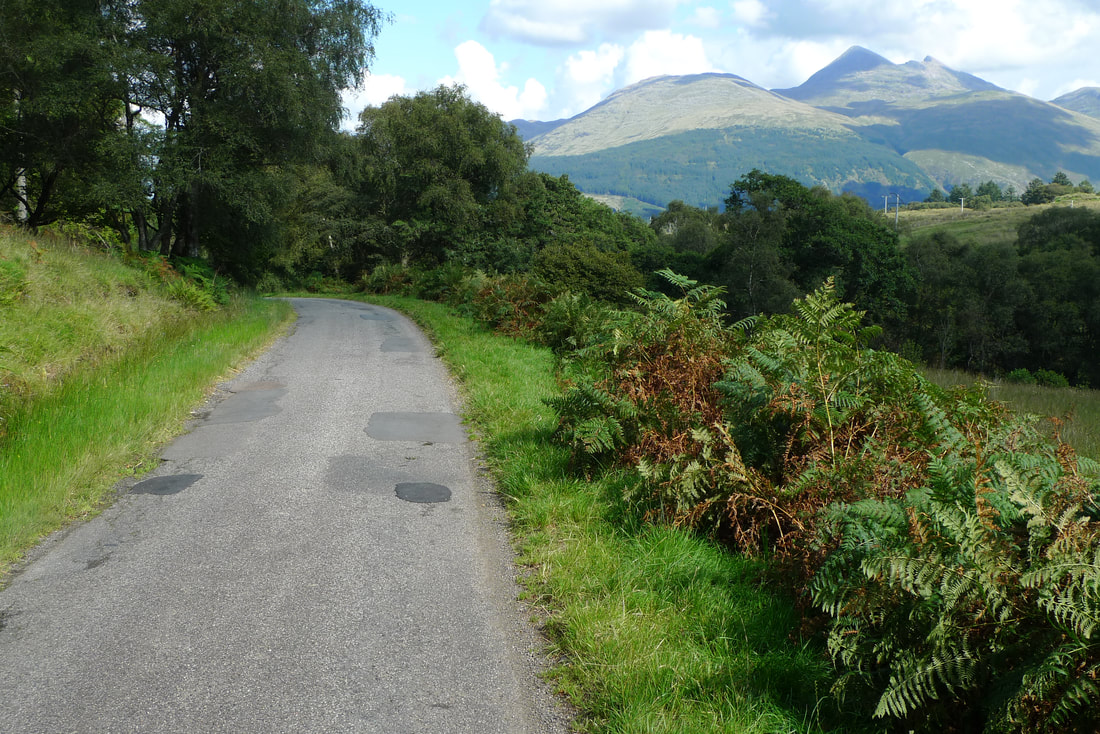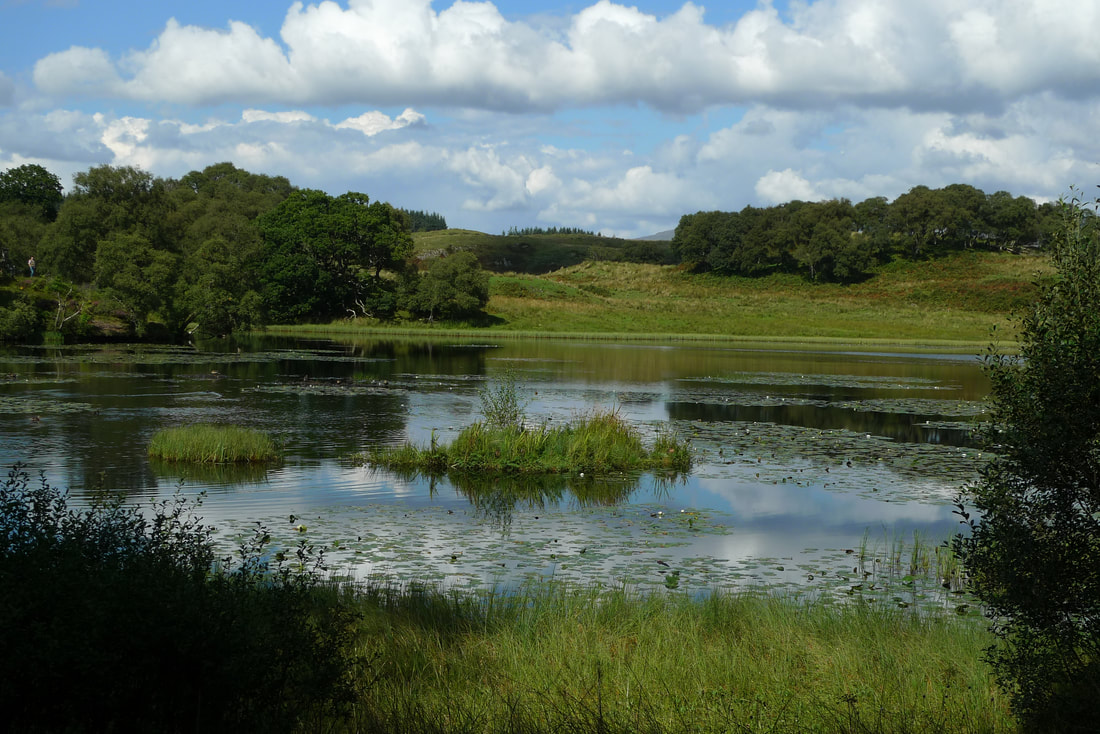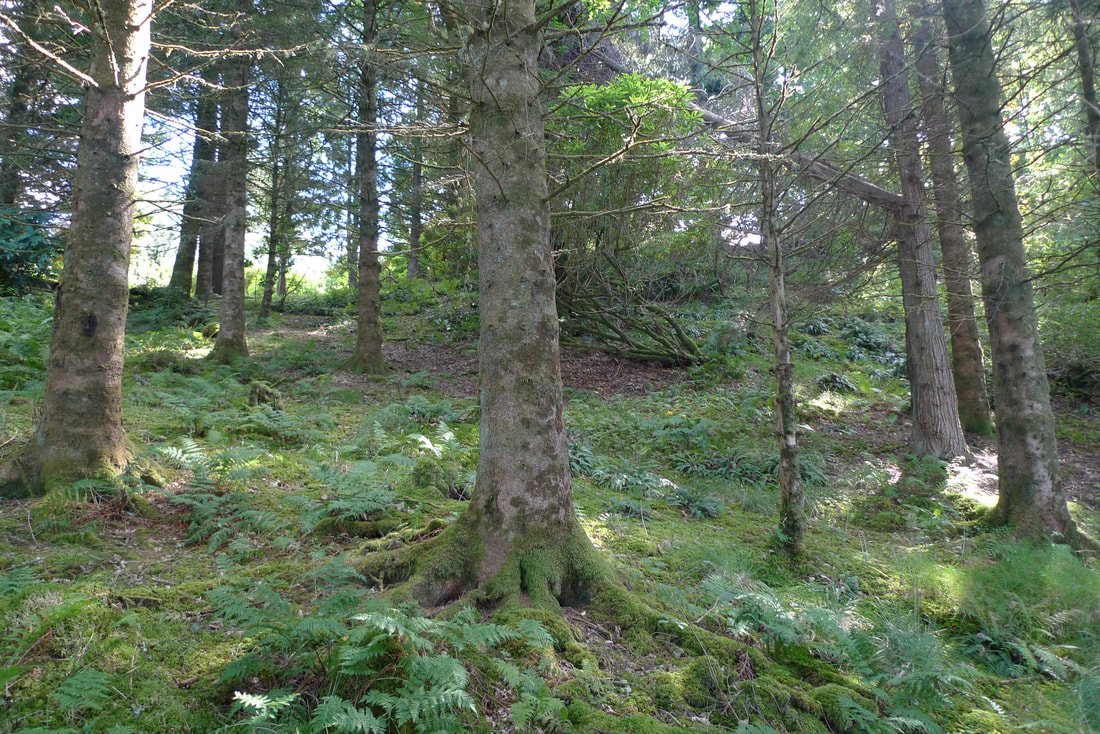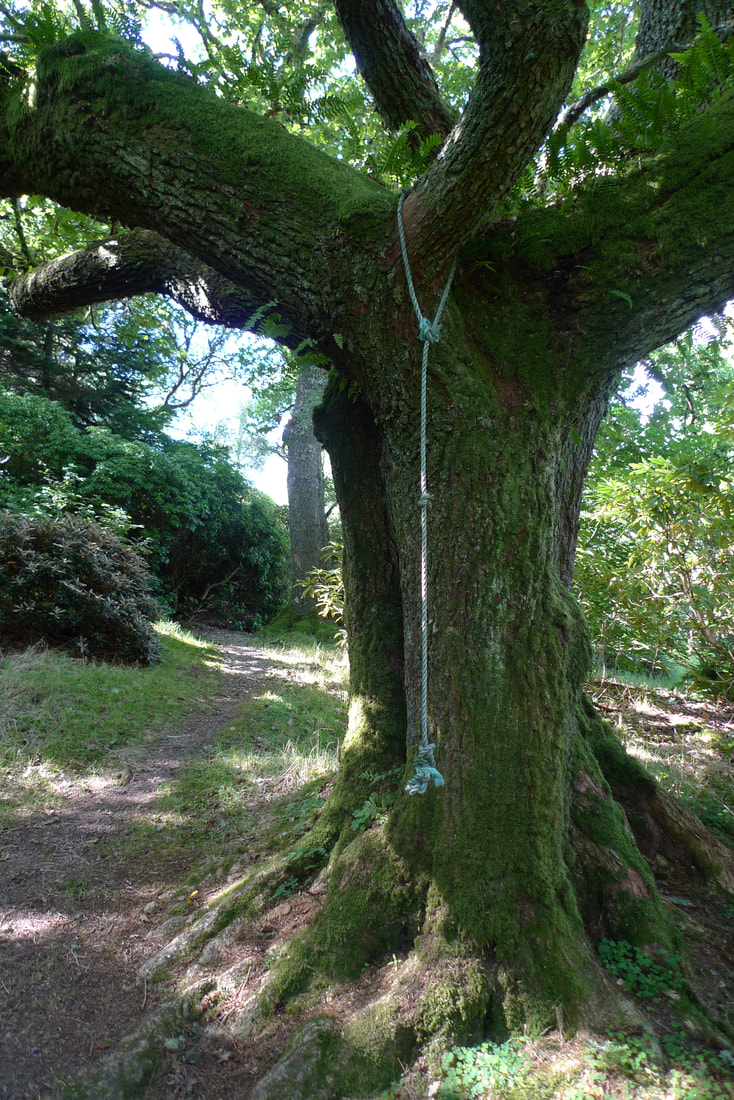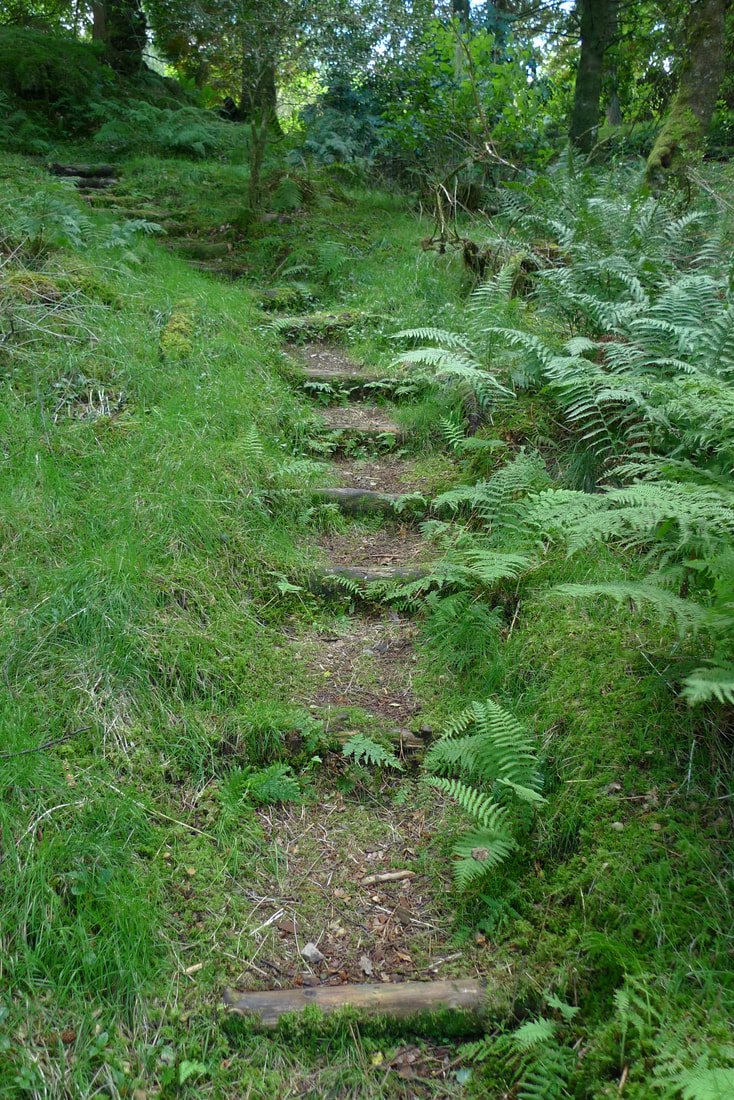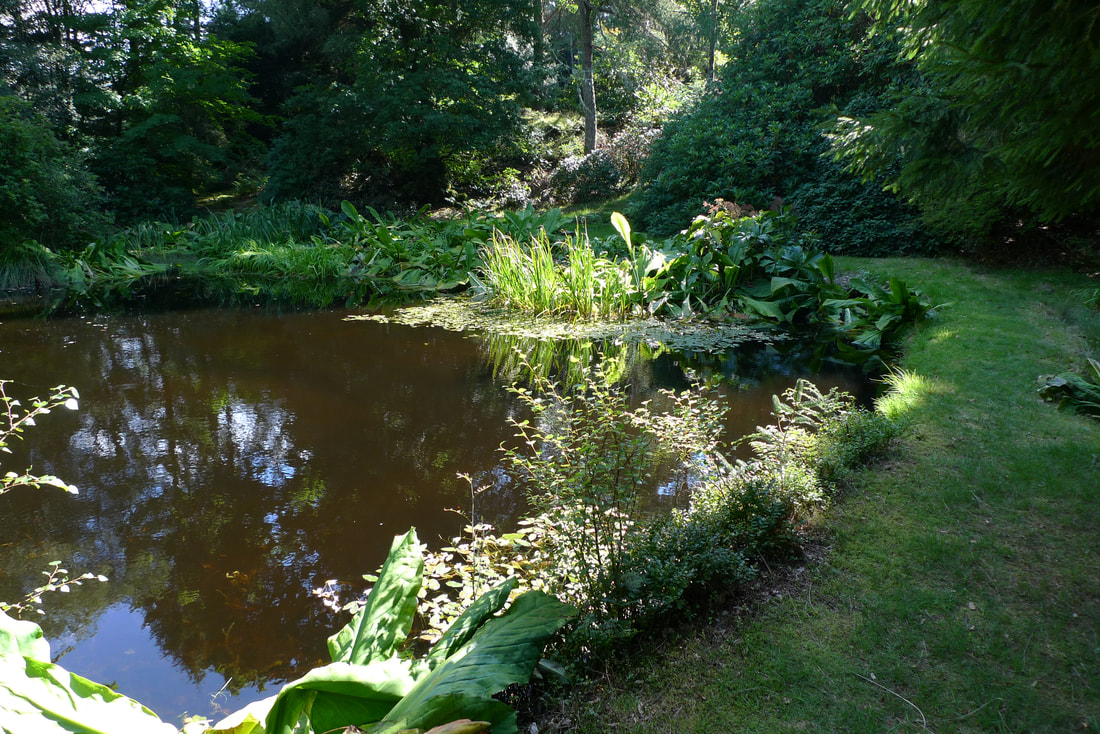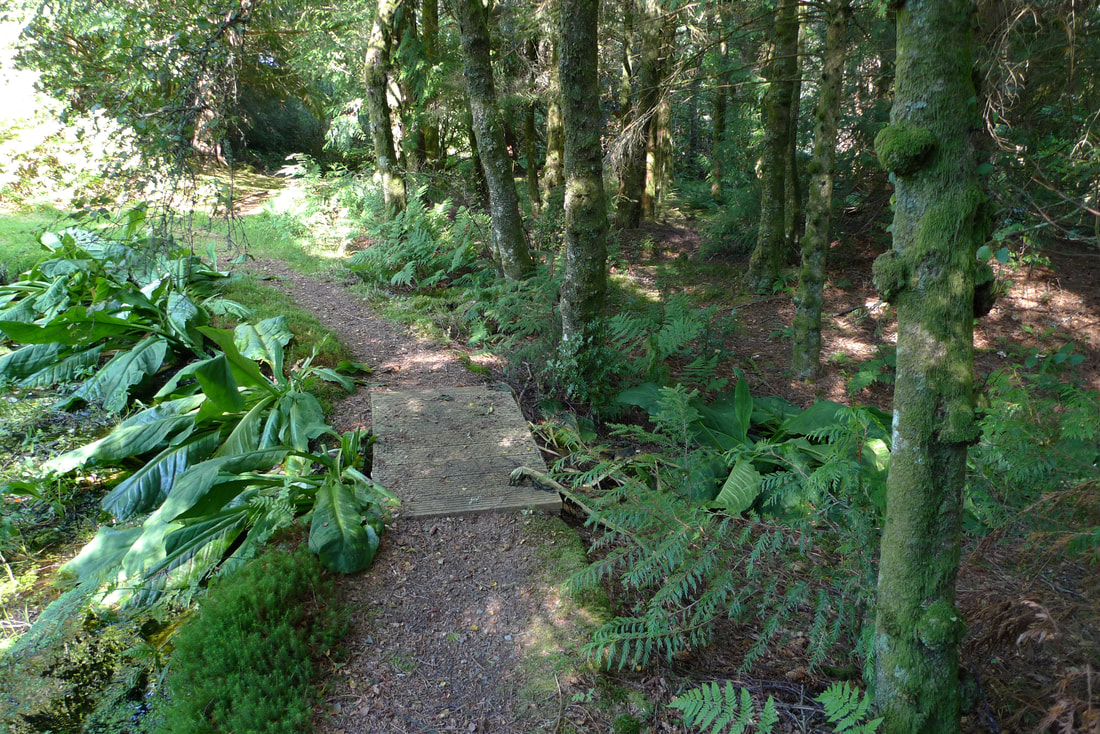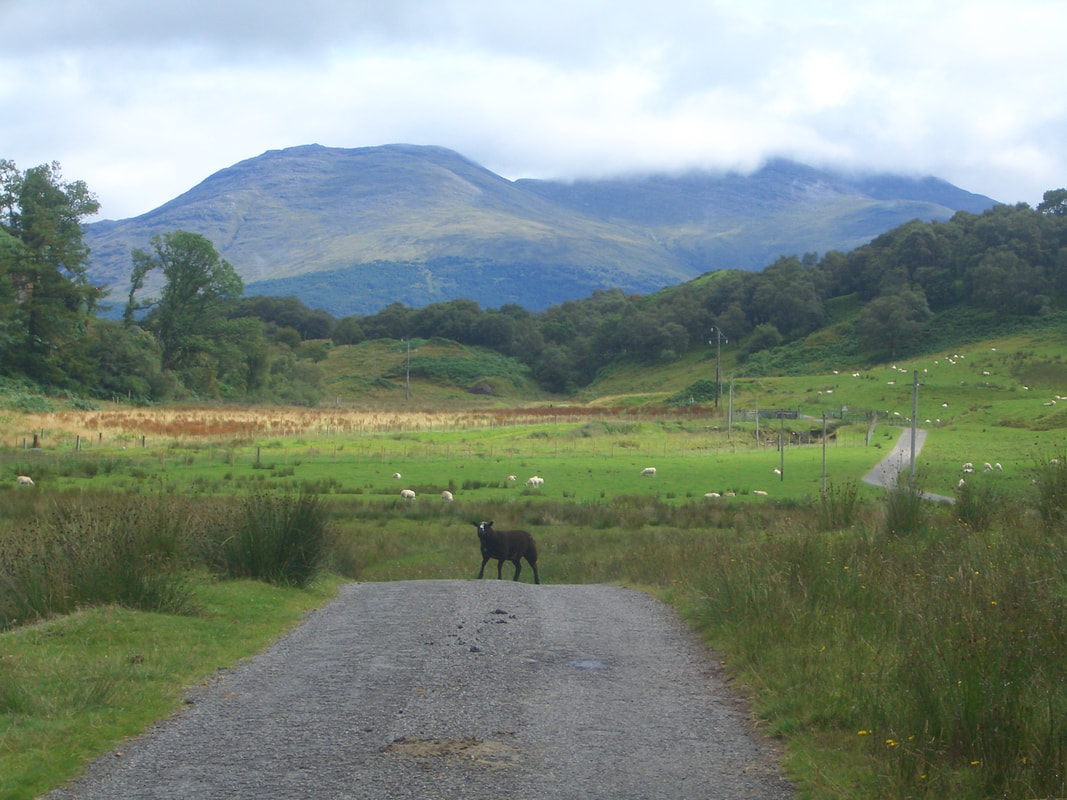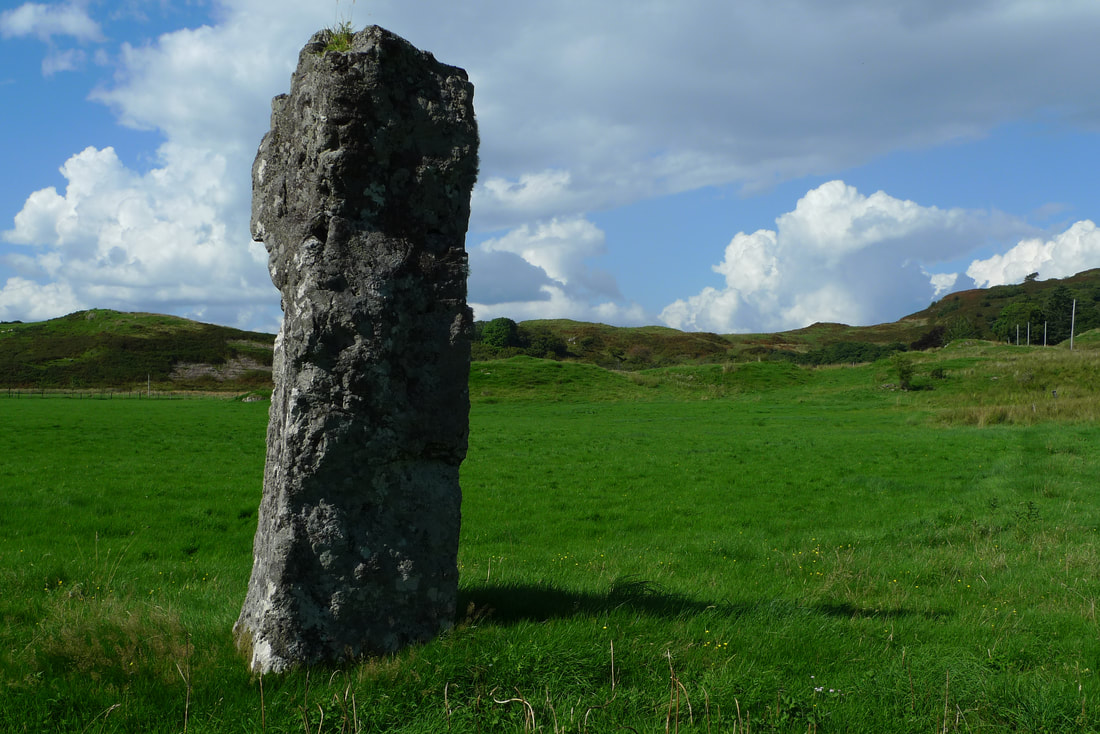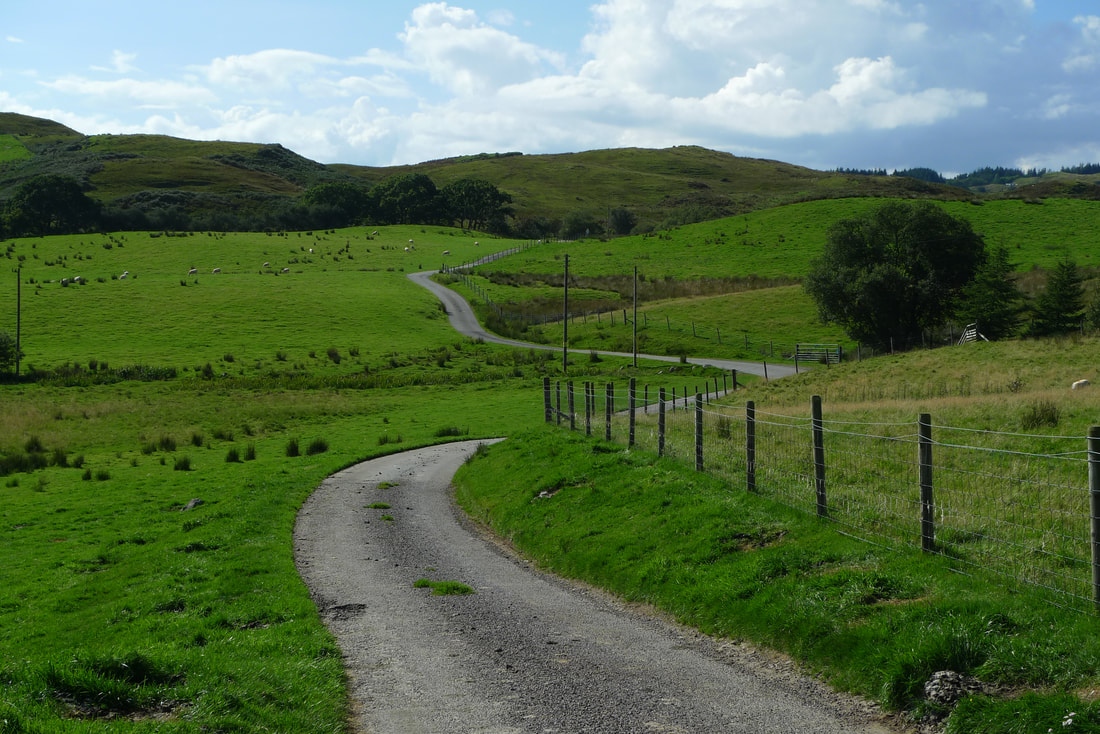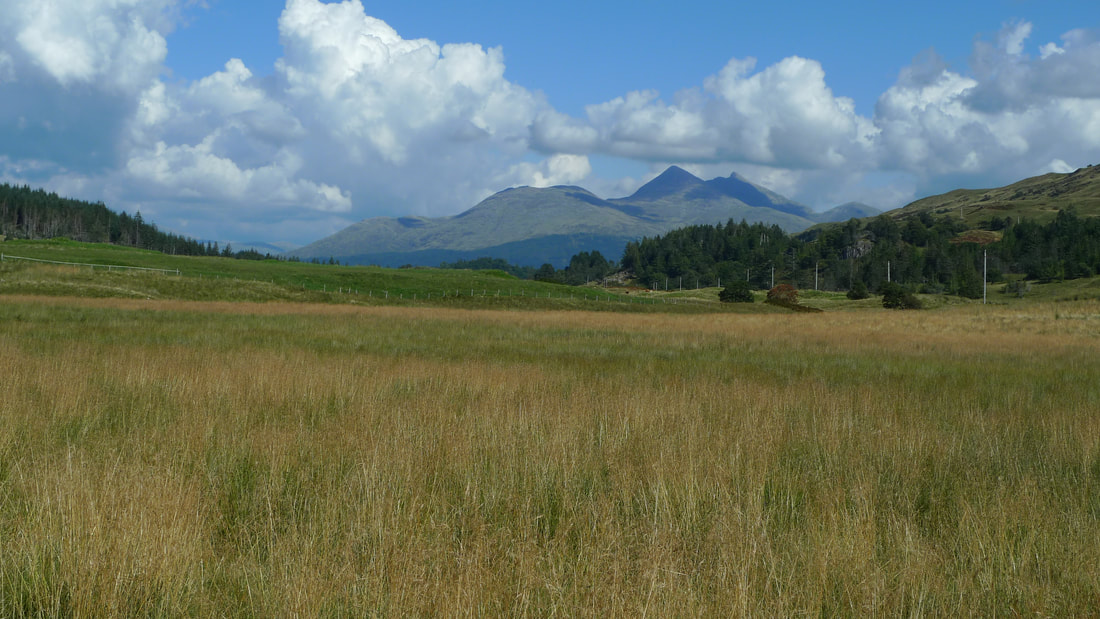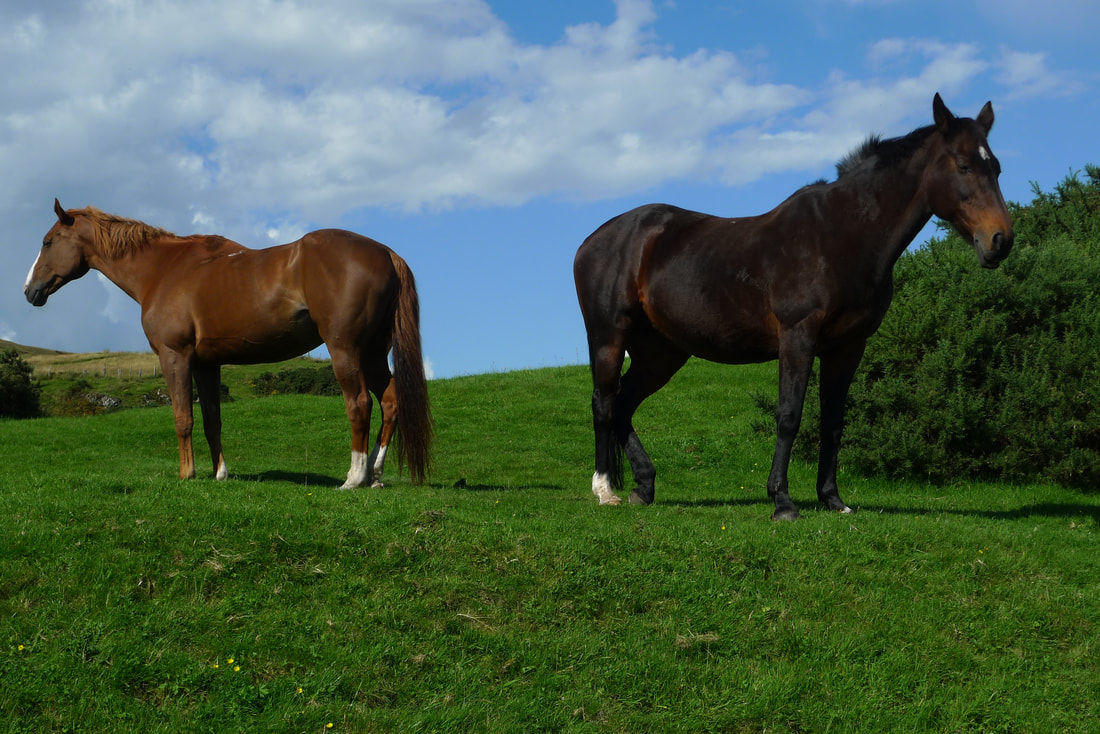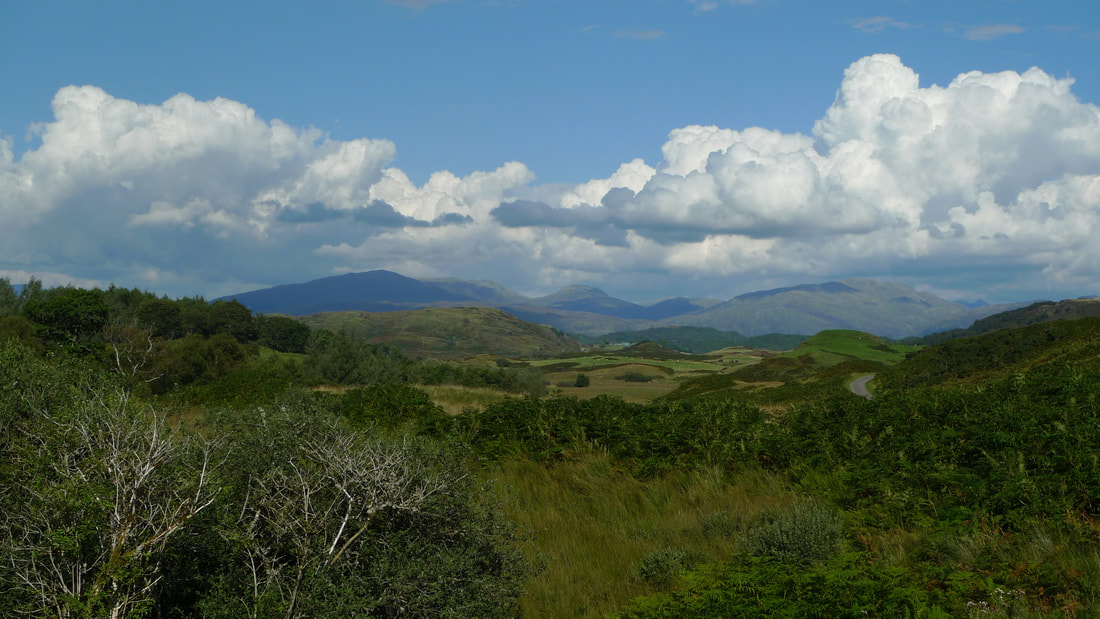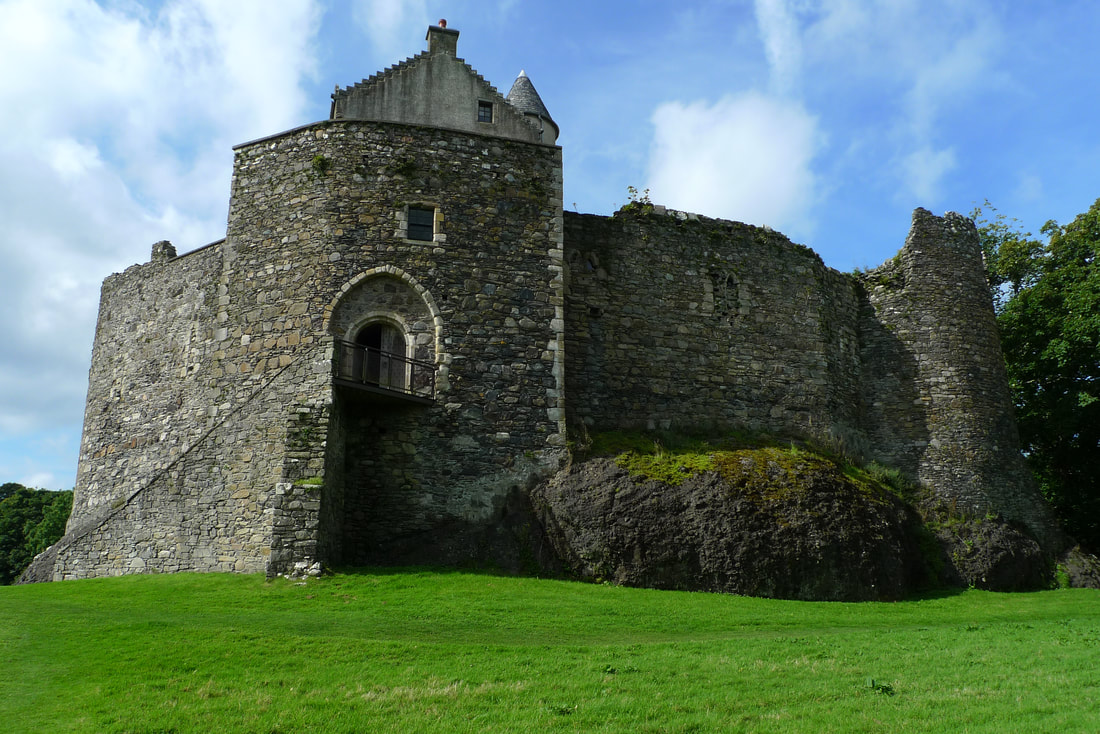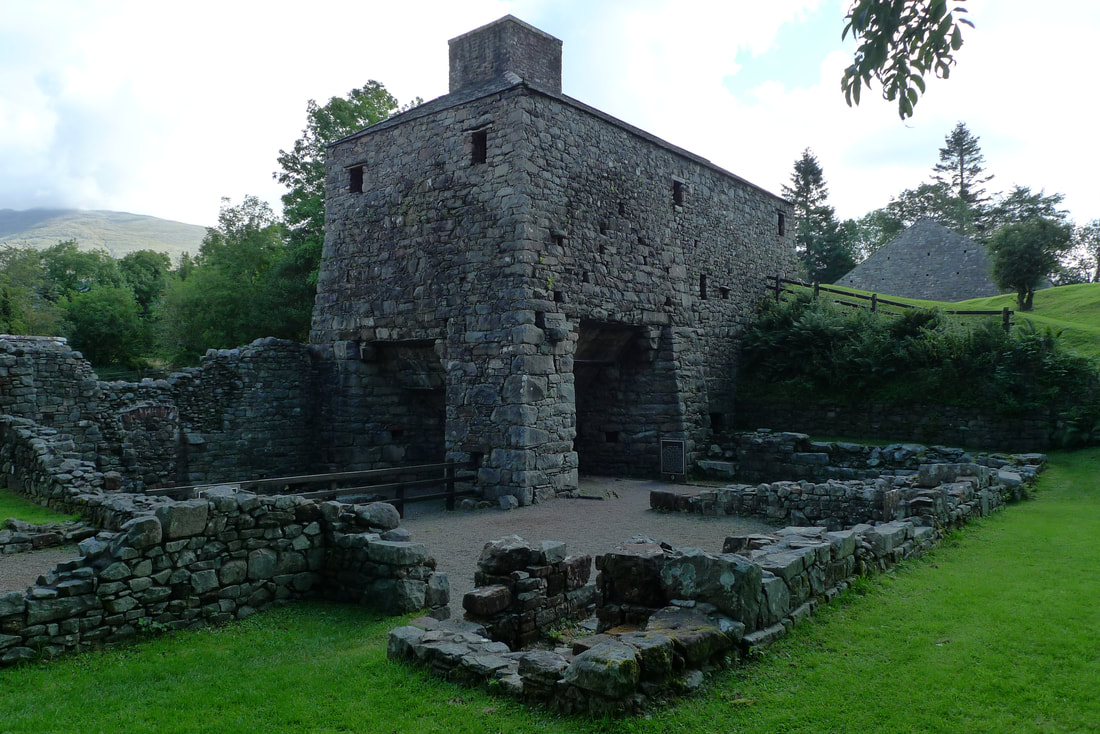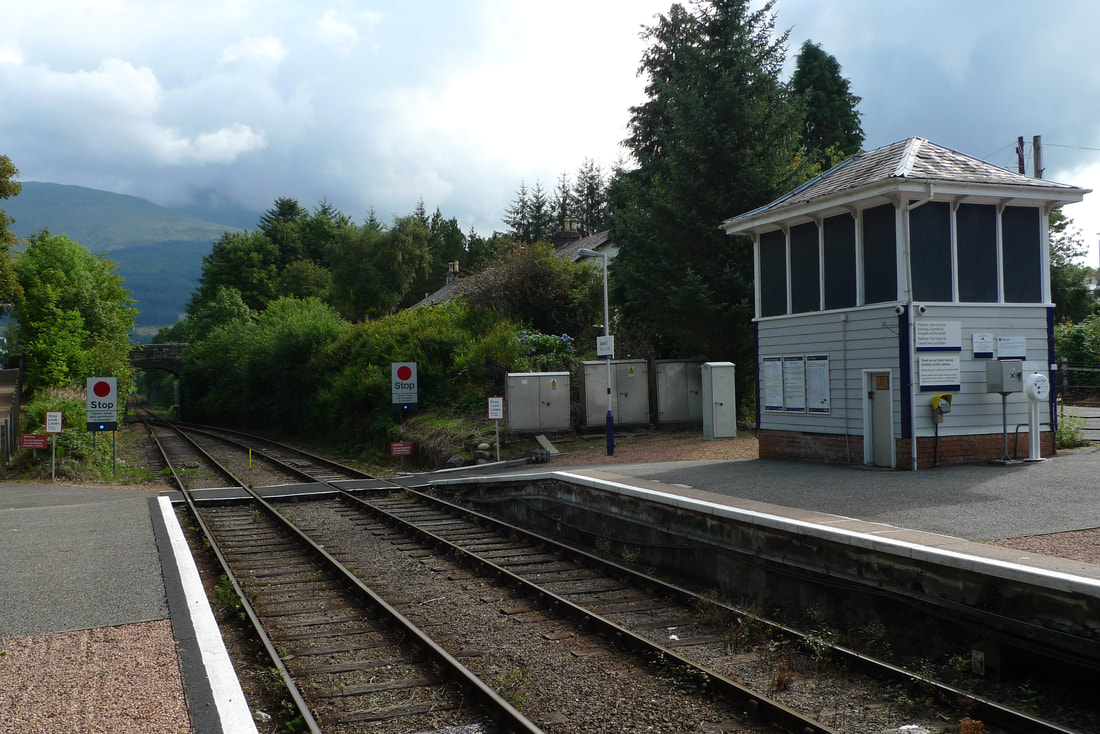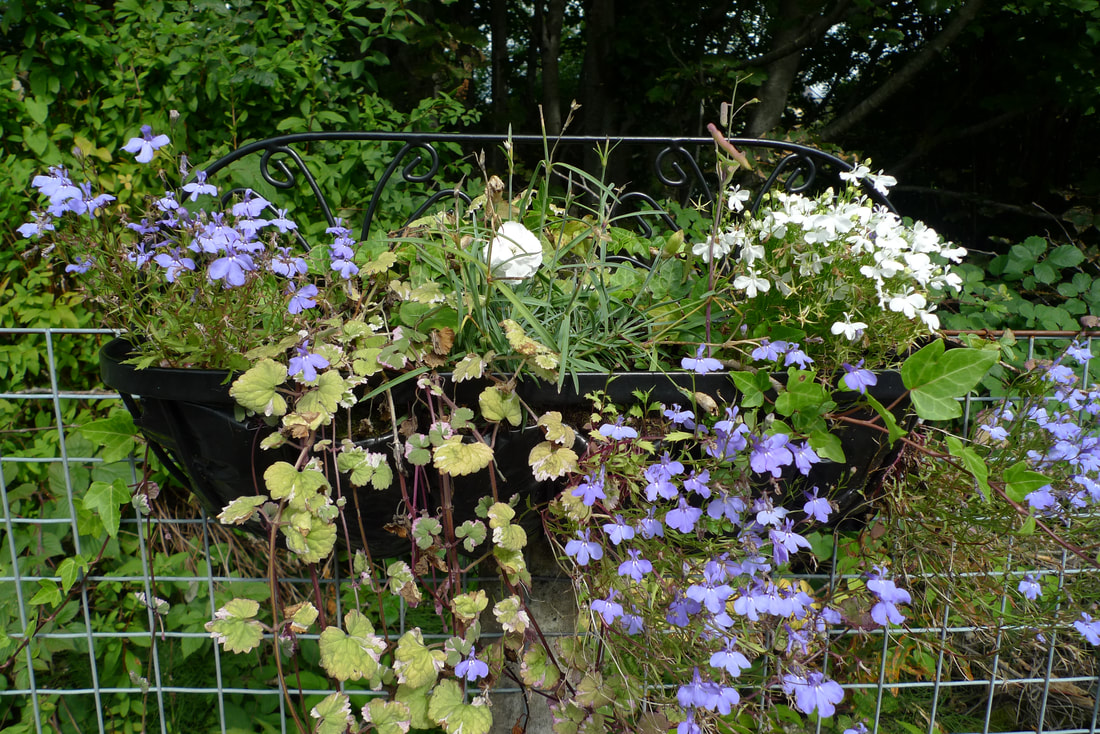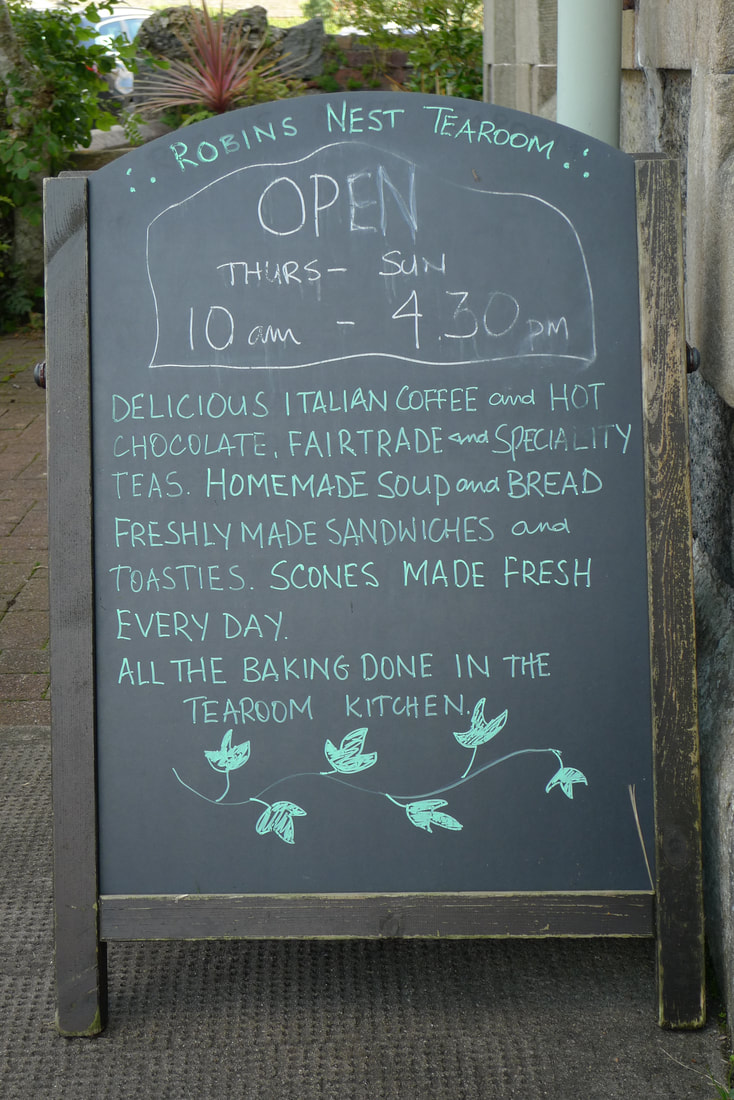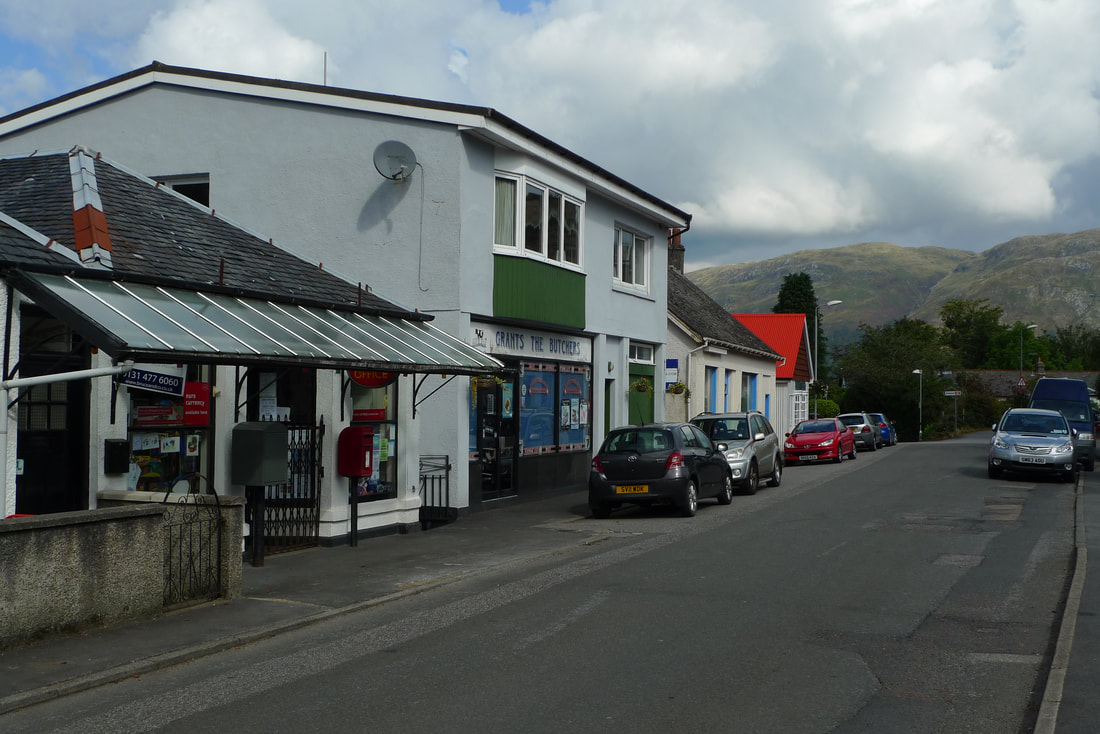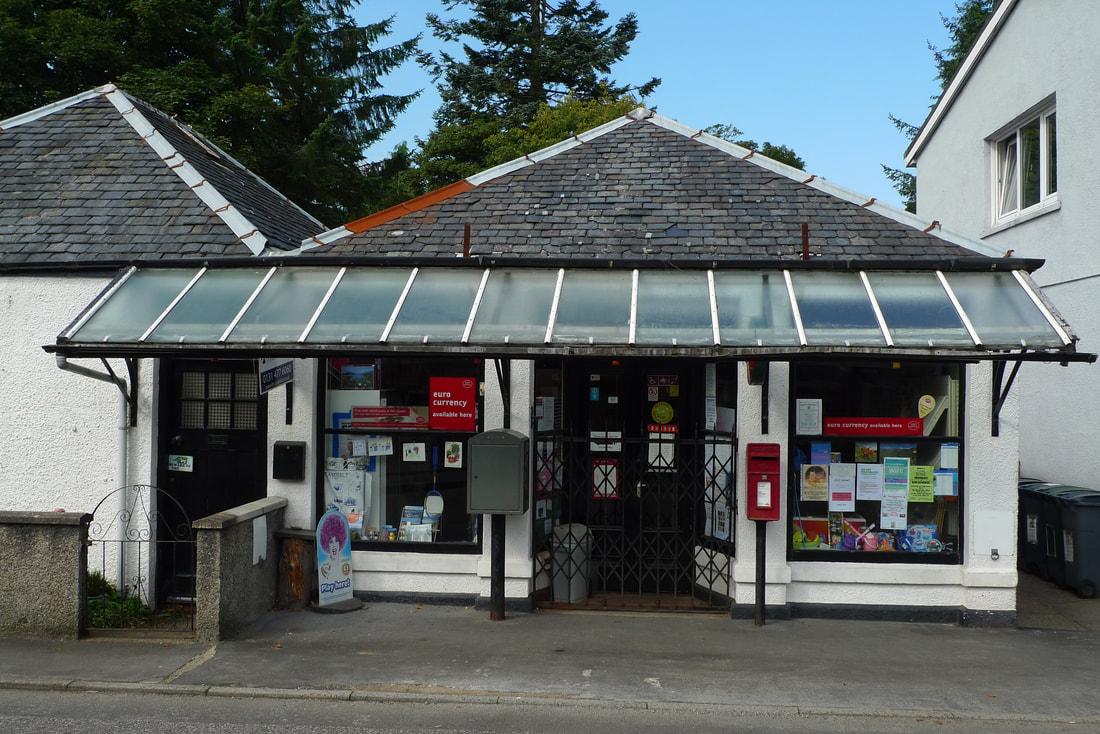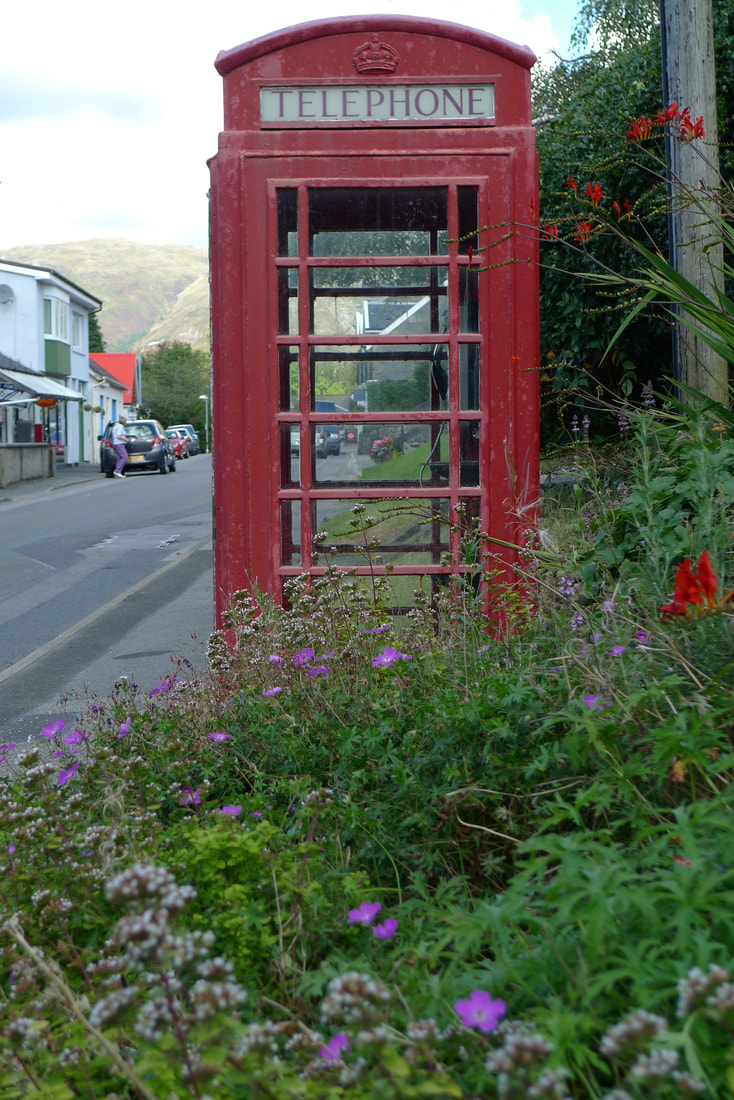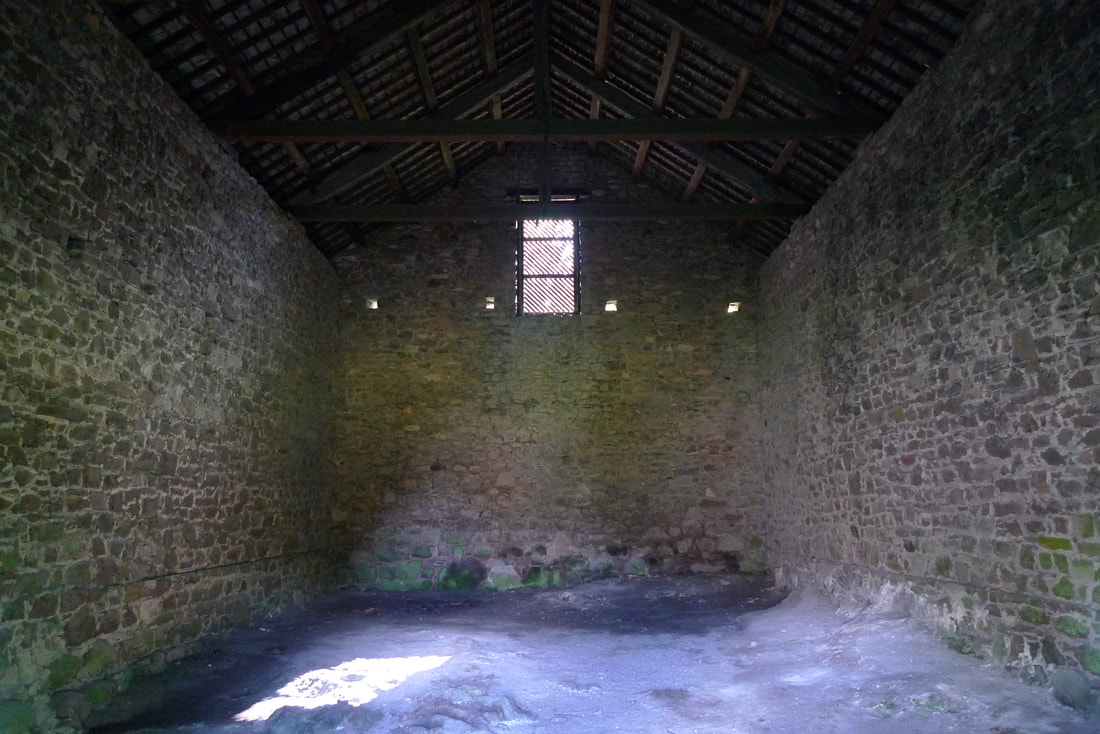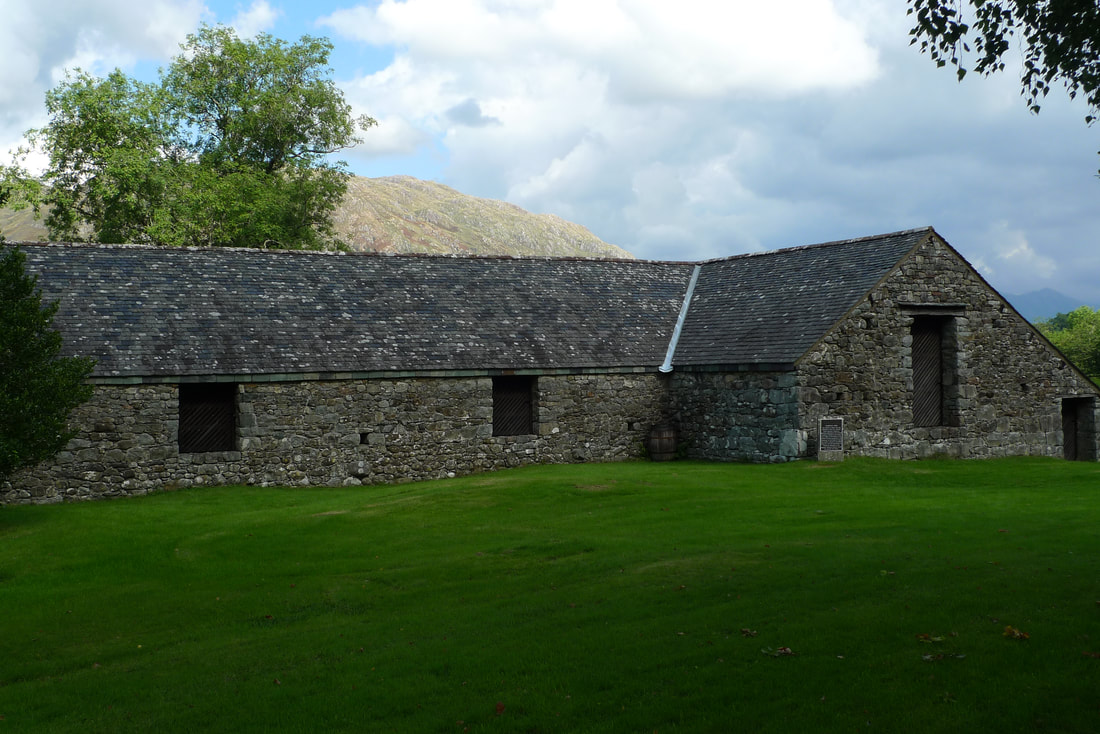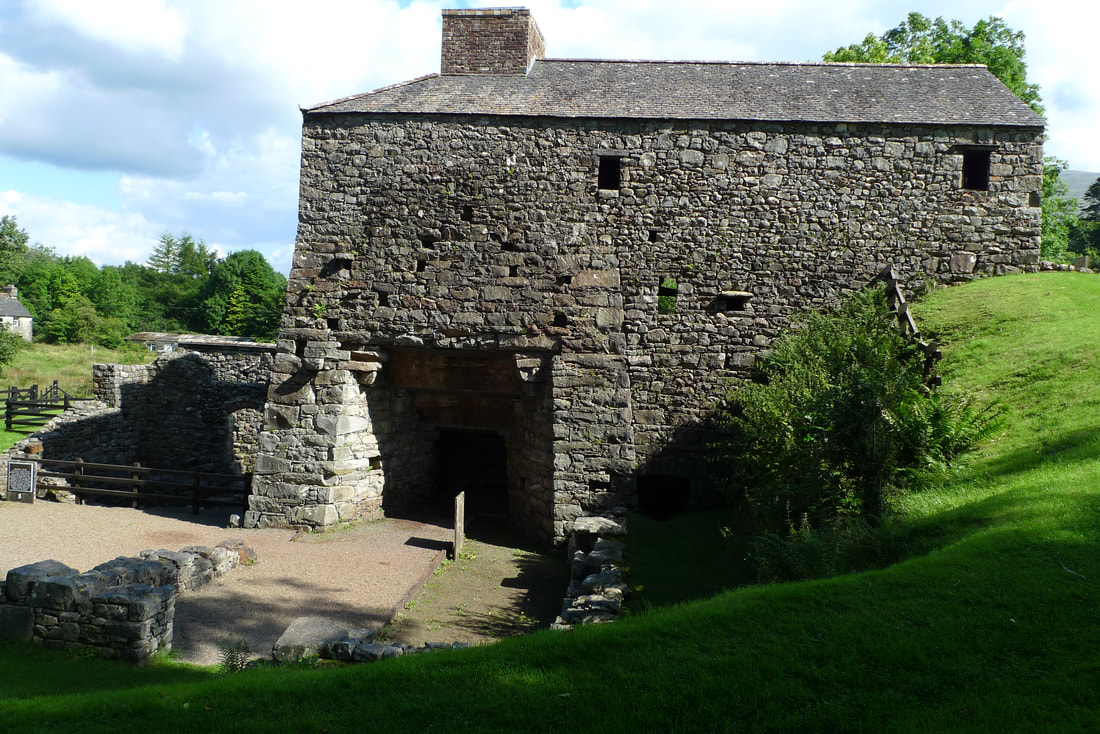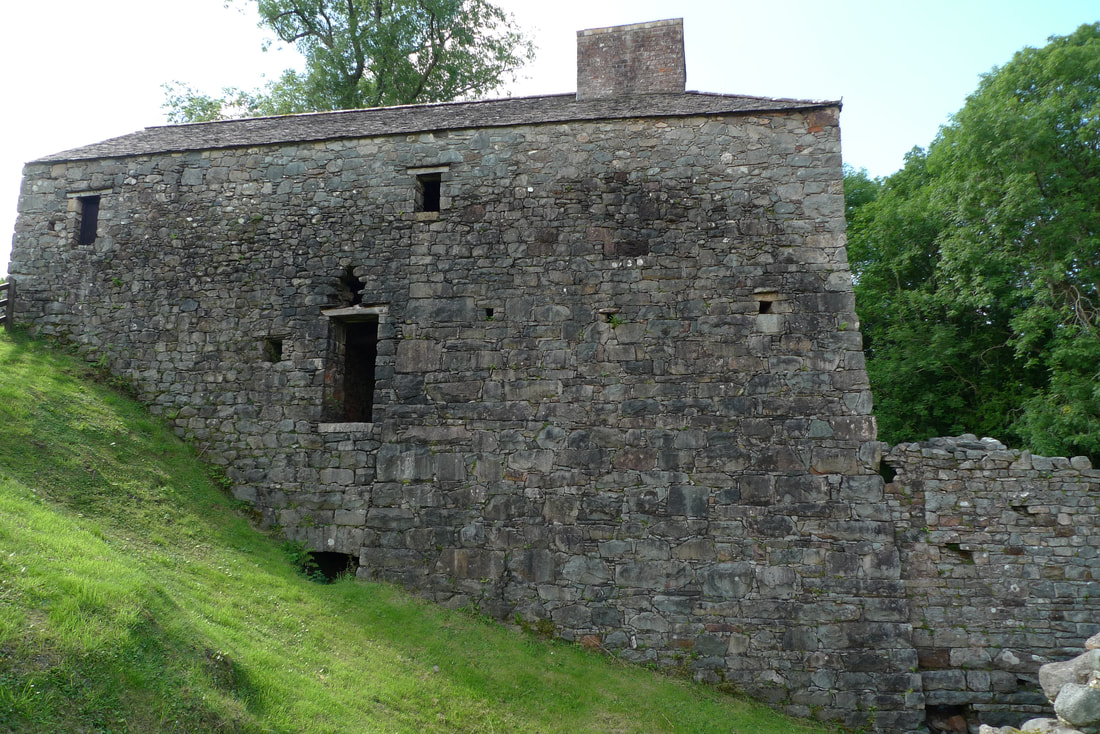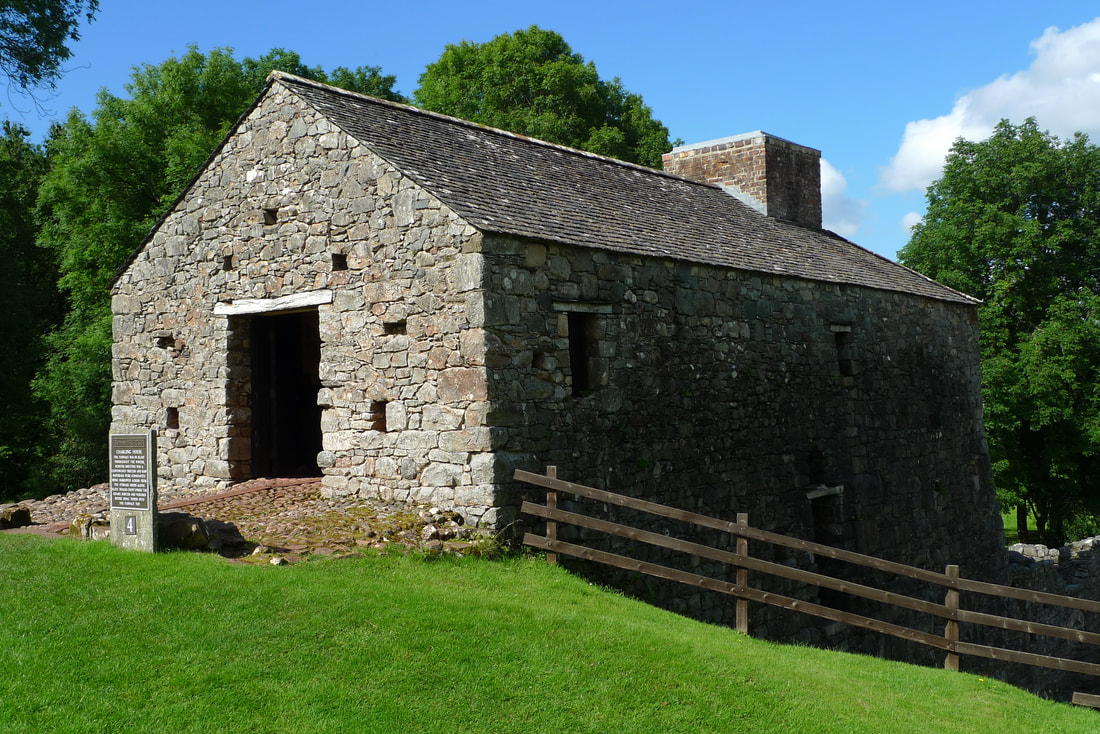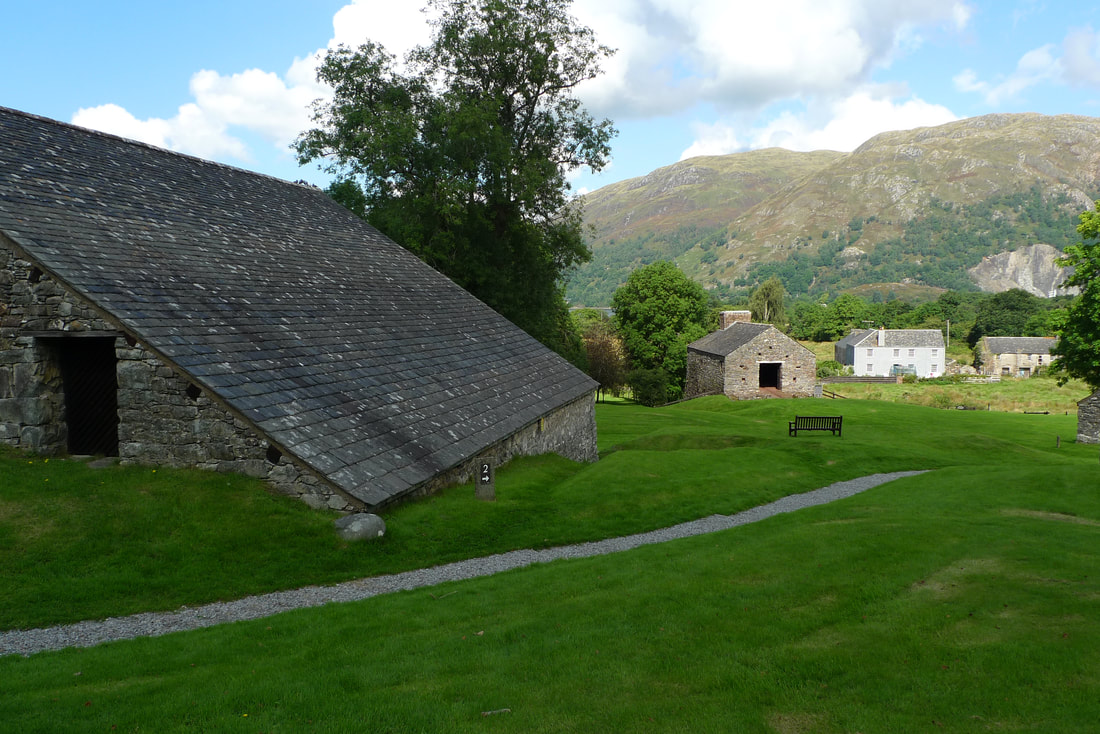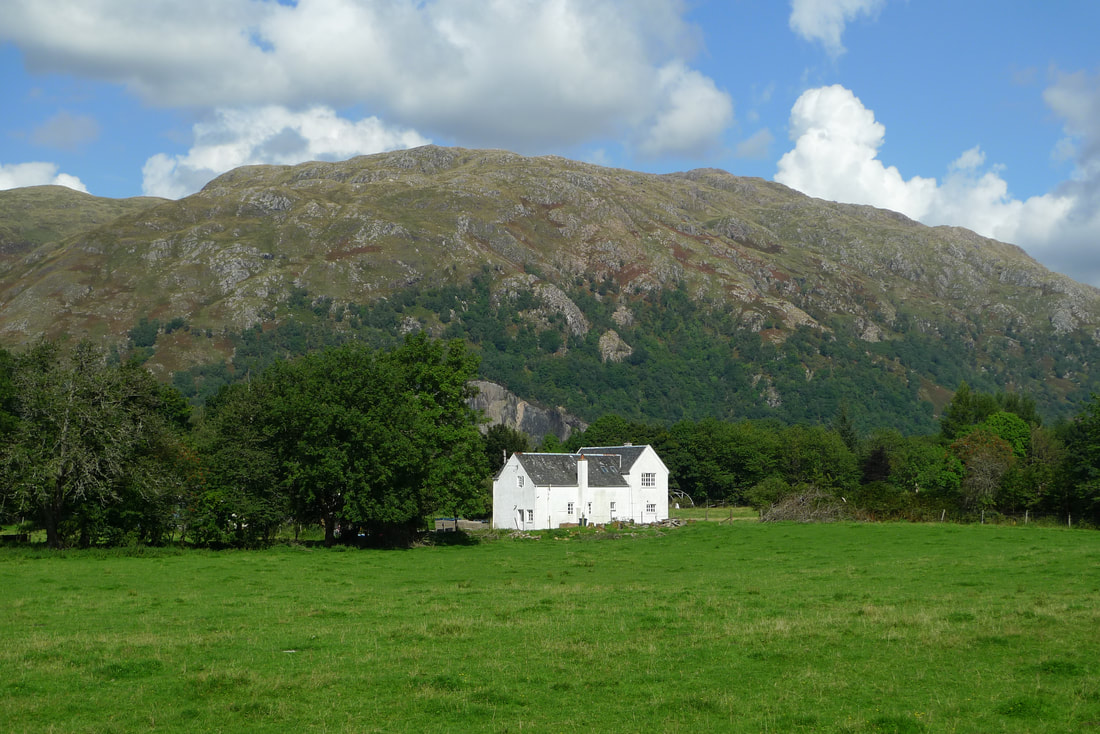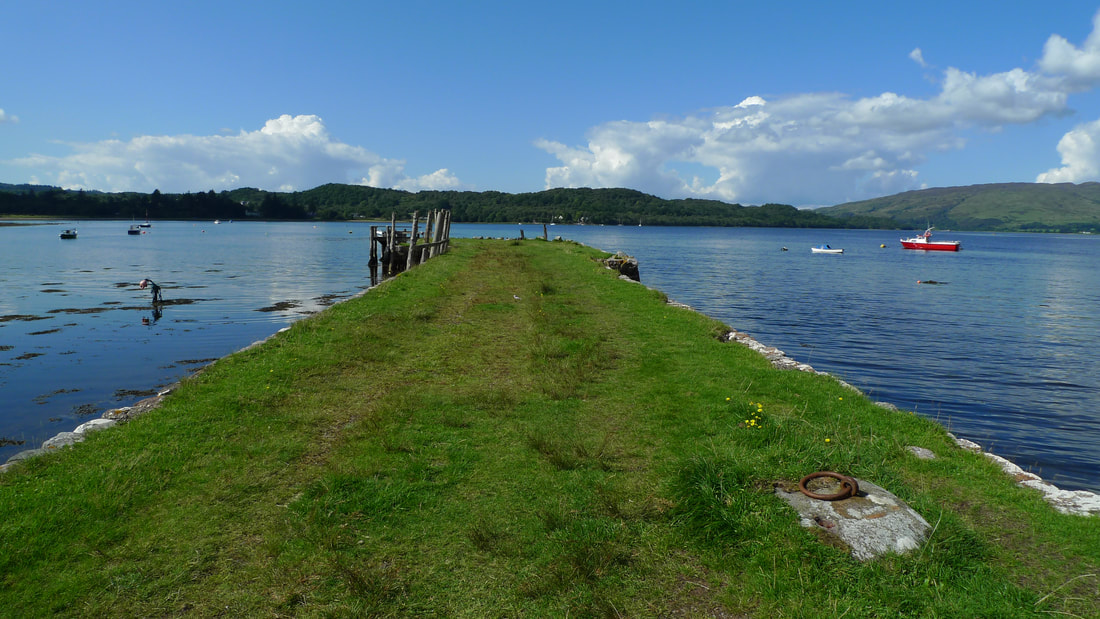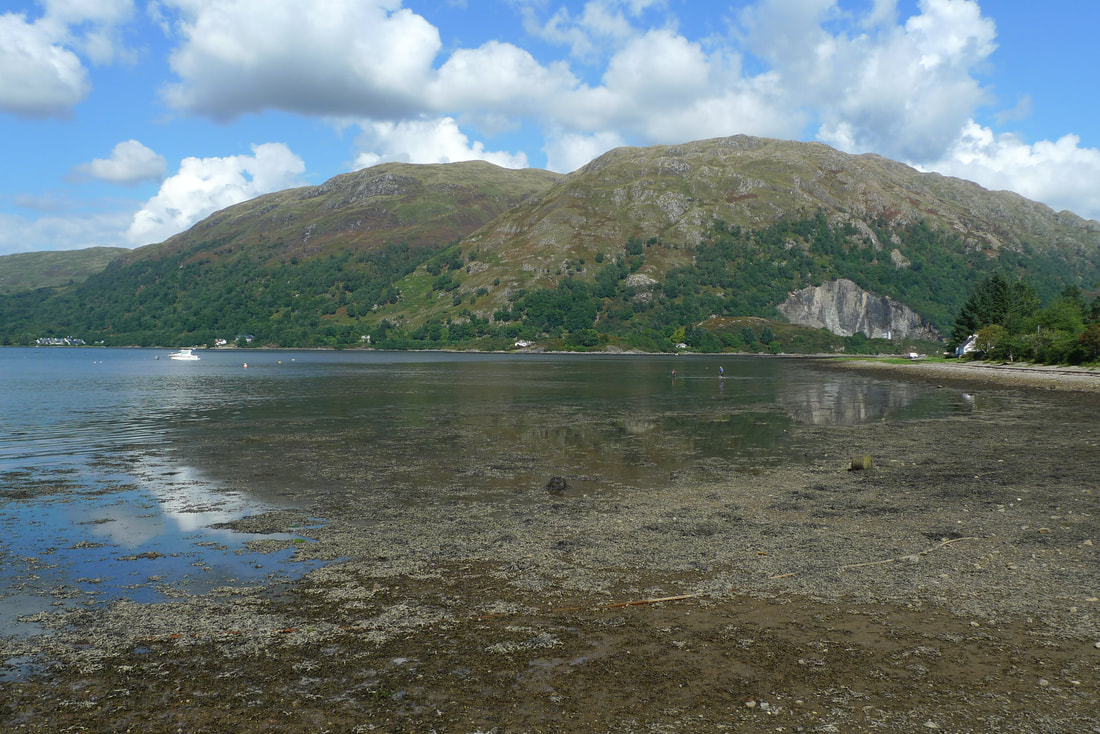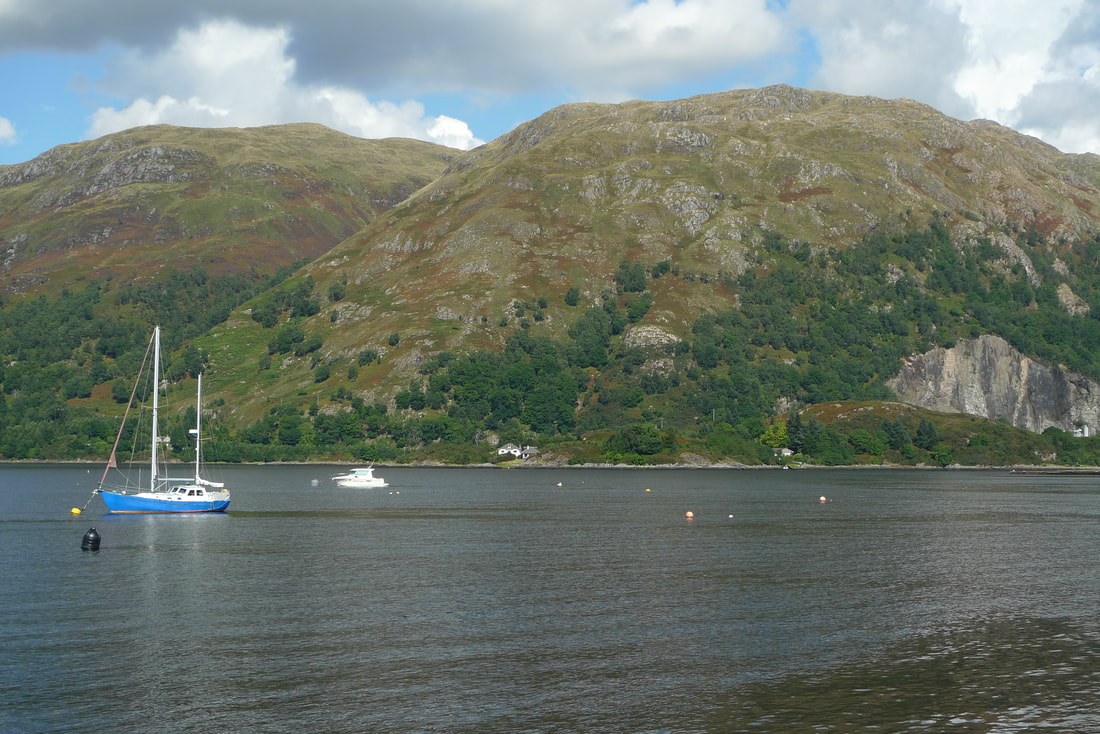|
Fancy sharing your bike ride with Highland cattle? The single-track road through Glen Lonan is one of those places where there is a good chance of these iconic beasts straying onto the tarmac. The 12 mile road links Oban with Taynuilt and takes you through a lush glen of woods, fields and isolated farmhouses. "The Road of Kings" is famed as the ancient funeral route of Scotland's Kings to their final resting place on the island of Iona. This is a great road to ride with hardly any traffic and mountains on the horizon.
How to get here The Glen Lonan road is a great way to arrive into Oban if you are taking the train- Taynuilt is two stops before Oban, so hop off the train early and get in a bit of extra cycling. Taynuilt is on the Glasgow to Oban line. It's two stops before Oban, about 2 hours 40 minutes from Glasgow. Taynuilt station is rather pretty with flower boxes, a backdrop of mountains and a vintage signal box.
There is a great tearoom in Taynuilt and the fascinating Bonawe Iron Furnace is just a few minutes from the village. You can find out more about this in my Tanuilt and Bonawe blog.
Leave the station and turn right onto Taynuilt's main street with the small selection of shops. This will take you to the A85 which you cross over to a minor road, marked with a sign for Glen Lonan.
For the first few minutes this road is dominated by a cluster of cottages and houses. These soon make way for woods, streams, ferns and after a little bit of a climb there are meadows and fields for sheep and cattle.
The road twists and turns, rises and falls, giving plenty of variety to the ride. The views of the pointy mountains are particularly magnificent.
My video below gives you a great impression of how much fun this road is to ride, particularly the fast downhill sections. Also notice that the road is wonderfully free of vehicle traffic.
After about 3 miles you will reach Angus' Garden. The garden was created in the memory of Angus Macdonald, a journalist who was killed in Cyprus in 1956. Rhododendrons and azaleas dominate and there are numerous paths to go exploring and find the pond and loch. It is a tranquil place to spend some time and enjoy the views of Ben Cruachan.
After leaving the gardens there are sections of the road that travel through livestock fields. Here there are no fences and the sheep and cattle wander onto the tarmac. This is where you are likely to come across Highland Cattle.
5.5 miles from Angus's Garden you will arrive at the standing stone. It's about 4m tall and almost completely covered in crusty moss. It dates back to the Bronze Age and legend states that it marks the burial spot of Diarmid, an Irish hero who had a magical love spot that made women fall in love with him and single-handedly killed over 3000 soldiers in a battle.
The road that you are pedaling on was once the ‘Road of the Kings’, part of the route taken by the funeral processions of Scotland's kings when they were taken from Scone to their burial place on the Island of Iona.
From the standing stone it's just 4 more miles to reach Oban. It is one of those roads that you do not want to end because it is such a pleasure to cycle.
What struck me the most about Glen Lonan is that this road is so small and insignificant within this landscape- it feels like it is at risk of being swallowed up by all the trees, ferns and fields that it snakes through. This is a place to appreciate the immensity of Scotland's beauty.
Once you arrive in Oban and you feel like a bit more cycling and a visit to a castle then you could head 5 miles to Dunstaffnage Castle. My blog has all the details about how to get there and what the castle is like.
If you are in need of coffee and a sweet treat then head to the Oban Chocolate Company. It is one of the best chocolate shops in Scotland. Find out more on my blog.
Glen Lonan is in Argyll and Bute. For ideas of more to see and do in this region head to my Argyll and Bute page.
3 Comments
It's hard to believe that this peaceful loch and mountain setting was once a place where cannonballs were made to fight Napolean's armies. The Bonawe Iron Furnace operated from 1753 to 1876 in scenic Argyll. You can explore the remains of the site as well as spending a bit of time in Taynuilt, including the marvelous Robin's Nest tearoom.
How to Get to Taynuilt Take a train to Taynuilt on the Glasgow to Oban line. It's two stops before Oban, about 2 hours 40 minutes from Glasgow. Taynuilt station has a backdrop of mountains and a vintage signal box on the platform. Flower boxes fixed to the fence posts are an explosion of colour.
Once my train pulled away there was silence, not even birdsong. Only when I bent down to sort something on my bike did I hear a trickle from a stream. It took me by surprise after the constant noise of the train's diesel engine for over 2 hours to be suddenly deposited into this tranquility. It took my city-exposed senses a while to adjust to this.
After a long train journey I was in need of a cafe stop and Taynuilt has the wonderful Robin's Nest tearoom. The blackboard proudly states 'all the baking done in the tearoom kitchen.'
Robin's Nest Tearoom
Inside there are not that many tables and several had reserved signs on them. I heard a local say "the church hasn't come in yet", and I wondered if, being a Sunday, this is where the congregation came for post-worship coffee. The interior is traditional with pine furniture and local artwork on display. I overhead a conversation about a giant salmon that someone had caught in a nearby river. A poster on the wall stated that there was a £1950 jackpot in the Village Hall lotto. I ordered the butternut squash soup which tasted sweet and delicious. No wonder this place is so popular when the food is this good- I was told I might have to share my table and all the customers were being given a time when they needed to vacate their table by. My coffee cake, decorated with coffee beans, was also superb. A Walk Around Taynuilt Although a small village Taynuilt has a good selection of shops, including a Post Office, butcher, grocer and hairdresser. It doesn't take long to see everything, but it is very pleasant to stroll and there is a photogenic garden next to the red phone box.
How to Get to Bonawe Iron Furnace
It is just under one mile from Taynuilt station to Bonawe Iron Furnace, about 7 minutes on a bicycle or a 20 minute walk. The route is mainly on a very quiet B-road where you are unlikely to be troubled by vehicles.
Exploring Bonawe Iron Furnace
What surprised me about the site is how extensive it is. I had imagined just one building with the remnants of a furnace inside, but there are multiple buildings that are spread over an area that requires a decent amount of walking to cover. Two of the largest buildings were used to store charcoal. They are enormous inside, giving a good impression of the massive quantity of charcoal that was required to make iron.
The supply of charcoal is the reason why there is an iron furnace in this remote location. The operation had been set up by an English company based in Cumbria. The wood supplies had been exhausted in that region and the company knew that the forests of Argyll would provide what they needed. It made business sense to transport the raw ore by boat to Argyll where there was plenty of oak and birch trees to make it into iron.
Another resource that was required in large quantity at Bonawe was water. A waterwheel powered the bellows that were used in the smelting process. The water came from the River Awe.
The site is so tranquil and tidy, with neat grass lawns, and this makes it difficult to imagine what it was like when over 600 people once worked here. A small number of the workers were from Cumbria, but most were recruited locally and were Gaelic speakers. Most of the staff were employed seasonally, in the summer, to cut down trees and fire the wood to make charcoal.
The wages were poor and some of it paid in oatmeal, ale or whisky. The furnacemen worked 12-hour shifts, so it was no surprise that excessive drinking took place.
It was technological advances that made Bonawe redundant. Iron could be made cheaper elsewhere and the place shut down. in 1876. What you see today is a collection of stone, industrial buildings set within gorgeous scenery. It has been tamed by the beauty of the landscape, the noise and grim working conditions no more.
After my visit to Bonawe I made the short cycle to the old pier where the the iron ore was landed after its journey from Cumbria. The pier is overgrown with a thick layer of grass. I walked its length and could smell salt in the air. Loch Etive was calm with some kayakers enjoying a paddle. The surrounding hills were lush with trees. The sun was out and the whole place was ideal for sitting and relaxing.
Bonawe Iron Furnace is looked after by Historic Environment Scotland. Visit their website to find out the current entry fee and the opening hours.
Taynuilt and Bonawe are located in Argyll. For more ideas of places to visit in Argyll head to my Argyll and Bute page. |
Categories
All
Archives
July 2024
|

